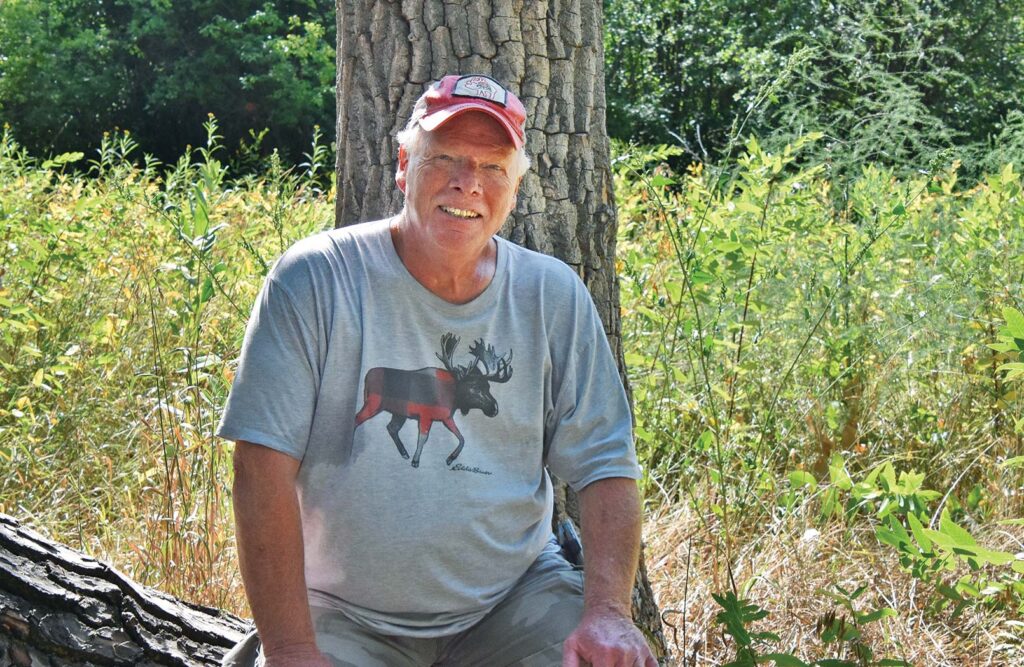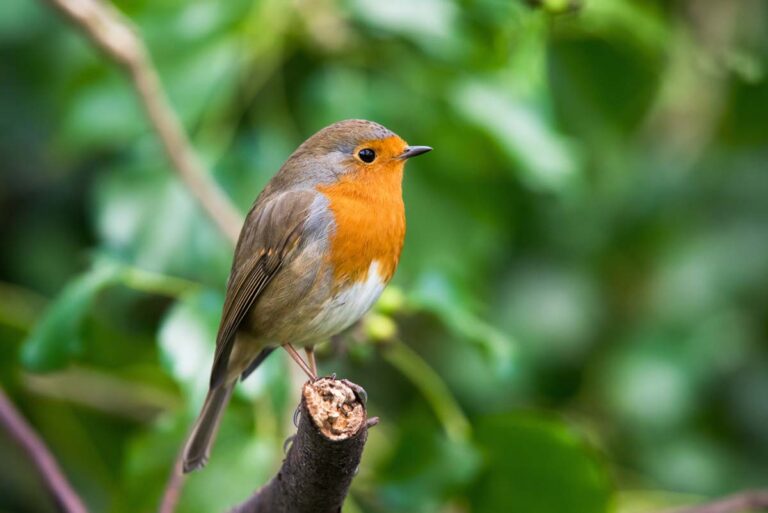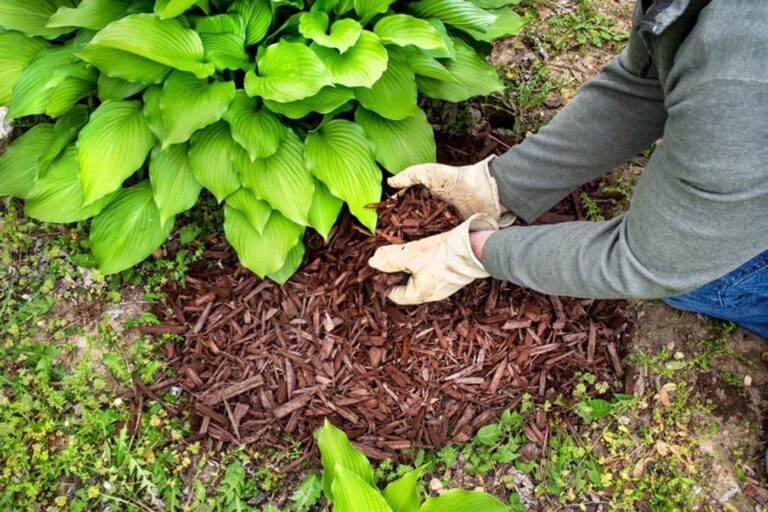The Clear Creek Greenbelt, which runs between Golden and Denver, offers 300 acres of open space for recreational activity including walking, running, cycling, gold panning, fishing and horseback riding. Beginning in the Continental Divide, Clear Creek runs 66 miles from Loveland Pass, cascades down through Georgetown, Idaho Springs, and carves a path through Clear Creek Canyon and then into Golden and Wheat Ridge. The Creek then flows east and becomes a tributary of the South Platte River. The South Platte flows into the Platte, to the Missouri then Mississippi, and into the Gulf of Mexico. Amazing to think about!
The area running through the heart of Wheat Ridge is not only beautiful, but boasts one of the best riparian habitats in the metro area. Mature trees, dense brush and wetlands provide sanctuary for wildlife, bees and butterflies, and is a relaxing respite for viewing birds.
To learn more about birding along Clear Creek, I interviewed Ken Hall, who is a fourth-generation Coloradan and a self-taught naturalist. Ken was introduced to birding by his grandmother near the banks of Clear Creek, and began a journey which yielded viewing and documenting 100-plus species of birds.
We met for a birding “wander” around Bass, Tabor and East lakes in early October when the last monarch butterflies and bees were enjoying the copious yellow blooms of rabbitbrush before migrating. He pointed out a red-winged blackbird flitting in the branches above Bass Lake and related fascinating stories from his many birding wanders.
We all are historians of sorts; we’re always documenting, noticing patterns, and the shifts and changes through the passage of time. I asked Ken about changes along Clear Creek that he’s witnessed over the years. He recalls seeing pheasants among the fields of grasses and hearing the morning songs of meadowlarks in brush. The meadowlarks, not fond of loud sounds, have moved onto quieter areas as did the pheasants and lark buntings.
However, when the abandoned gravel mining pits used to make I-70 near Youngfield were reclaimed, they were subsequently filled with water and stocked with fish, and now make up West, Bass and Tabor lakes. Conservation efforts in the area have given way to support refuge for wildlife such as deer, fox, coyote, beaver, muskrat and bobcat, as well as nesting grounds for waterfowl.
Ken says, “Nature amazes me”, and that it is fascinating to watch bird species interact with one another. Ken recalls watching a family of wood ducks meandering in Clear Creek and noticed something unusual: a single red-headed duckling riding on the back of a wood duck hen. Observing this phenomenon over a few days he discovered that merganser ducks occasionally drop their eggs into the nests of wood ducks, to be raised.
Cormorants moved in and claimed the island on Tabor Lake to nest, and share their nests along with the herons. Ken recalls seeing the herons lay their eggs, then watch the fuzzy-headed babies emerge to be fed. He captured an incredible image at Tabor Lake of a heron spitting out a household goldfish into its baby’s beak.
“My passion for birding and nature photography is it allows us a reprieve from a busy world around us,” said Ken. “An escape if you will. To connect with the immense beauty of our surroundings is humbling. Also, it’s something for everyone. All ages. It forces you to slow down, yet is tremendous exercise.”
We are living in a fast-paced world where most everything seems to be easily had in an instant. Observing birds, however, requires a great deal of patience, slowing things down, and taking the time to connect with nature. We can stop and hone into our senses, listen and observe the nuances and study the simple and subtle dynamics of the natural world.
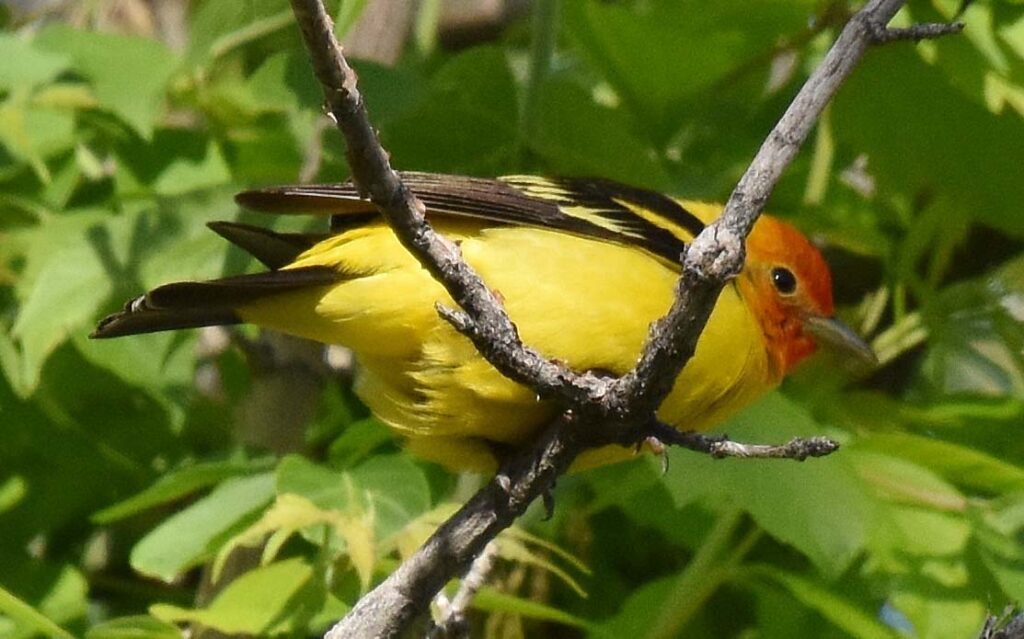
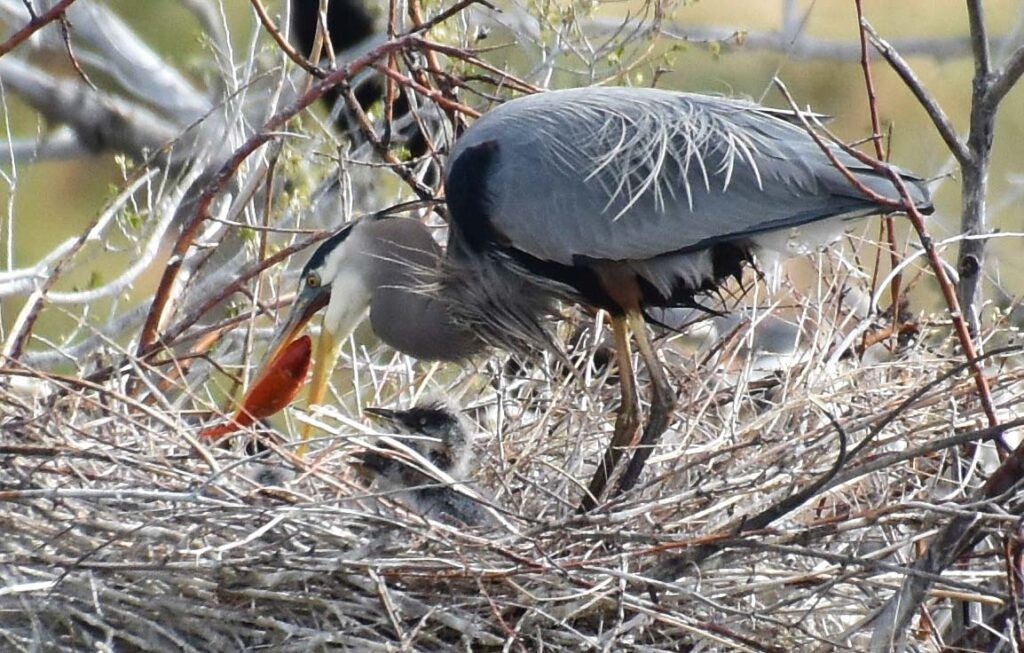
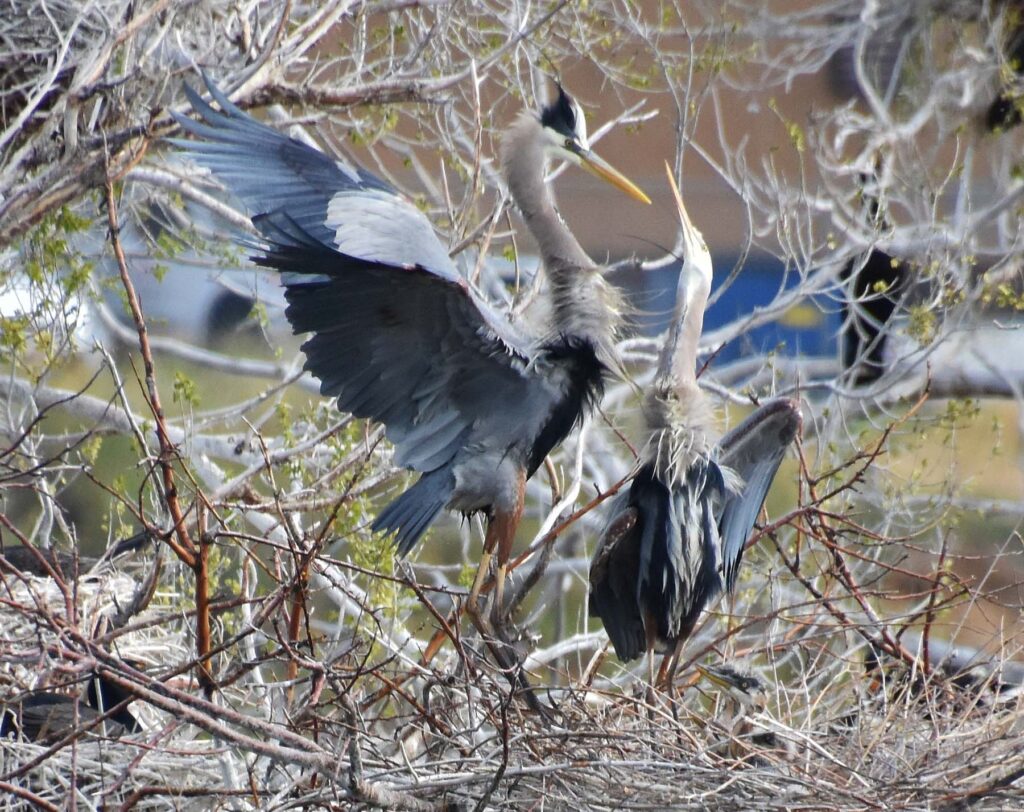
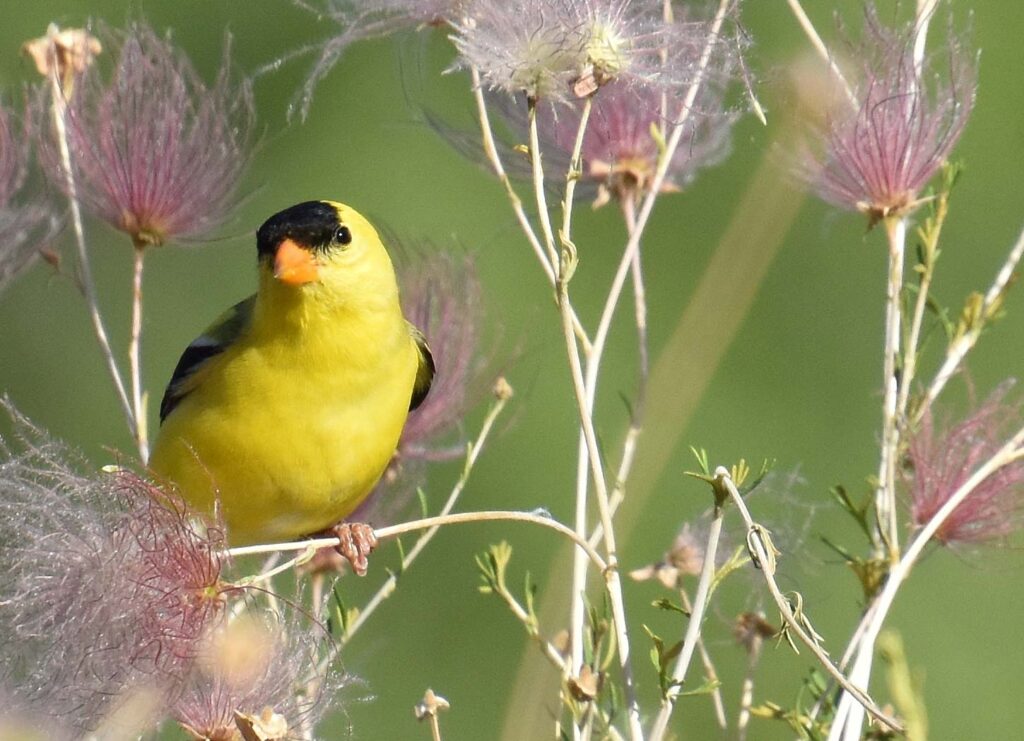
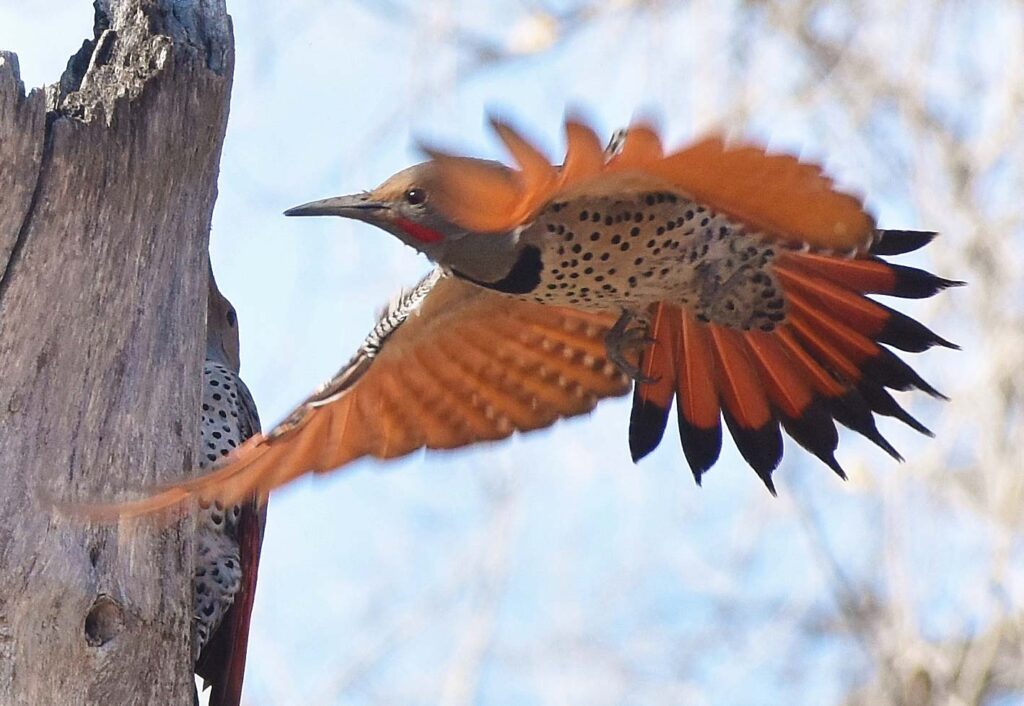
Birding is a great way to entice children to get outside and engage with nature. Ken suggests creating a scavenger hunt for children to teach them to collect data and look for clues, which can be as simple as listening and learning different bird calls. Also, with practice bird identification via observation of markings and color patterns makes for a fun scientific study.
The best times of the year to observe are in the spring and fall during the migratory season, when a greater variety of species can be found. The winter months provide a great opportunity for birding. As of date, migratory birds have left and are flying south to warmer climates; sepia-toned birds such as chickadees, house finches, hawks (red- tailed and Cooper’s), and great horned owls can be spotted lurking in the trees. Mallards, shovelers, hooded mergansers, and common goldeneye are some of the waterfowl that can be found as well. Those who keep bird feeders in their yards may notice that goldfinch ellipse from a brilliant yellow from the summer months to an olive gold during the fall and winter months.
The Wheat Ridge Greenbelt Youngfield entrance, just south of West 44th Avenue, is often overlooked in our busy lives. It is widely recognized as a prime viewing spot by the Denver Audubon. If a relaxing and nature-filled afternoon sounds appealing, this opportunity should not be missed.
Check the Colorado Parks & Wildlife website (cpw.state.co.us/thingstodo/) and click the bottom link “Wildlife Viewing” for additional details and tips.

